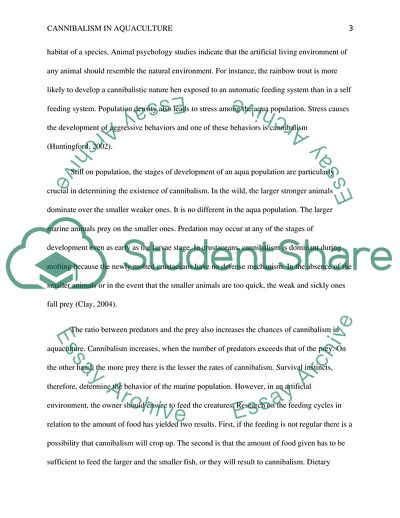Cite this document
(Cannibalism in Aquaculture Research Paper Example | Topics and Well Written Essays - 1250 words, n.d.)
Cannibalism in Aquaculture Research Paper Example | Topics and Well Written Essays - 1250 words. https://studentshare.org/culture/1777789-cannibalism-in-aquaculture
Cannibalism in Aquaculture Research Paper Example | Topics and Well Written Essays - 1250 words. https://studentshare.org/culture/1777789-cannibalism-in-aquaculture
(Cannibalism in Aquaculture Research Paper Example | Topics and Well Written Essays - 1250 Words)
Cannibalism in Aquaculture Research Paper Example | Topics and Well Written Essays - 1250 Words. https://studentshare.org/culture/1777789-cannibalism-in-aquaculture.
Cannibalism in Aquaculture Research Paper Example | Topics and Well Written Essays - 1250 Words. https://studentshare.org/culture/1777789-cannibalism-in-aquaculture.
“Cannibalism in Aquaculture Research Paper Example | Topics and Well Written Essays - 1250 Words”. https://studentshare.org/culture/1777789-cannibalism-in-aquaculture.


